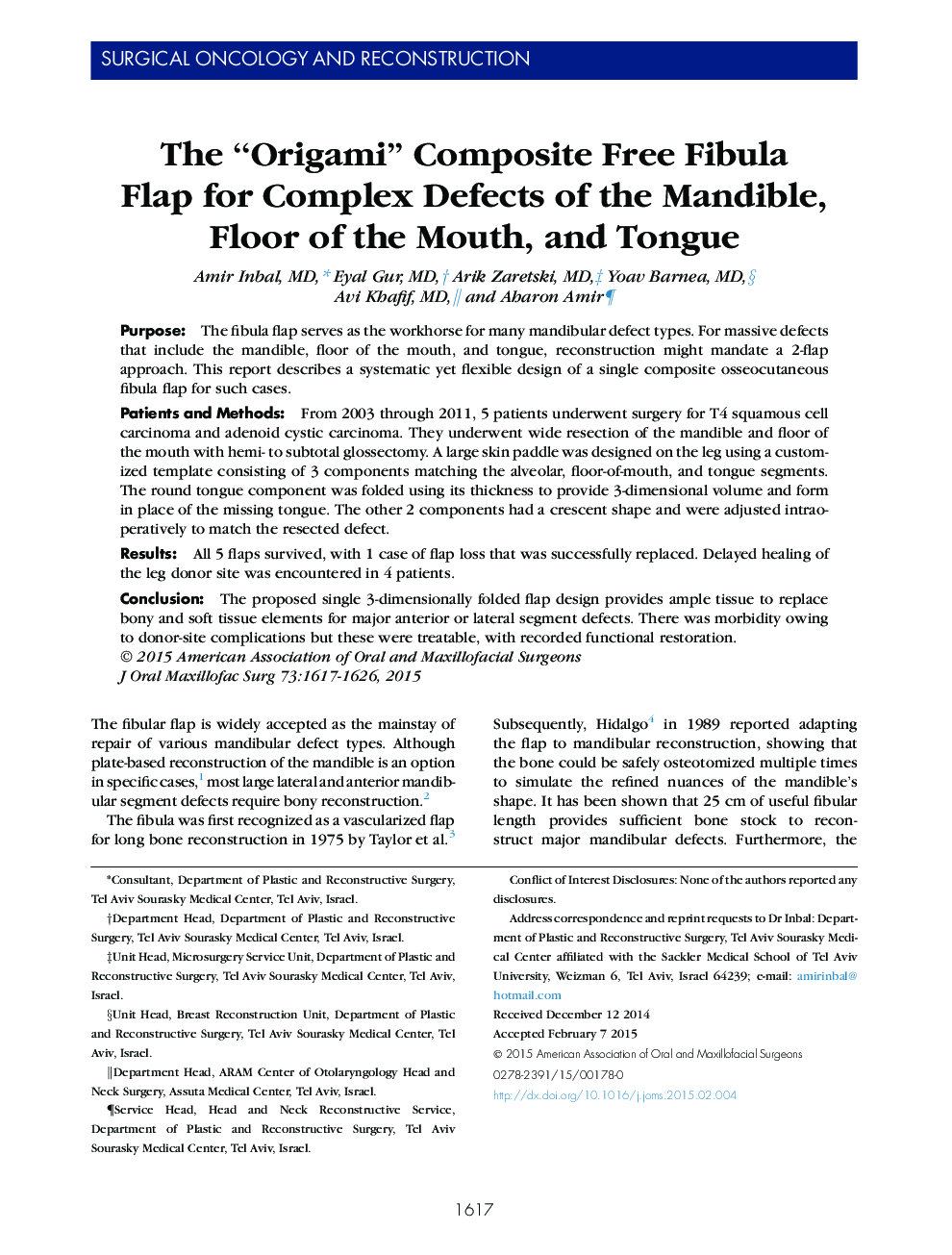| Article ID | Journal | Published Year | Pages | File Type |
|---|---|---|---|---|
| 3152337 | Journal of Oral and Maxillofacial Surgery | 2015 | 10 Pages |
PurposeThe fibula flap serves as the workhorse for many mandibular defect types. For massive defects that include the mandible, floor of the mouth, and tongue, reconstruction might mandate a 2-flap approach. This report describes a systematic yet flexible design of a single composite osseocutaneous fibula flap for such cases.Patients and MethodsFrom 2003 through 2011, 5 patients underwent surgery for T4 squamous cell carcinoma and adenoid cystic carcinoma. They underwent wide resection of the mandible and floor of the mouth with hemi- to subtotal glossectomy. A large skin paddle was designed on the leg using a customized template consisting of 3 components matching the alveolar, floor-of-mouth, and tongue segments. The round tongue component was folded using its thickness to provide 3-dimensional volume and form in place of the missing tongue. The other 2 components had a crescent shape and were adjusted intraoperatively to match the resected defect.ResultsAll 5 flaps survived, with 1 case of flap loss that was successfully replaced. Delayed healing of the leg donor site was encountered in 4 patients.ConclusionThe proposed single 3-dimensionally folded flap design provides ample tissue to replace bony and soft tissue elements for major anterior or lateral segment defects. There was morbidity owing to donor-site complications but these were treatable, with recorded functional restoration.
